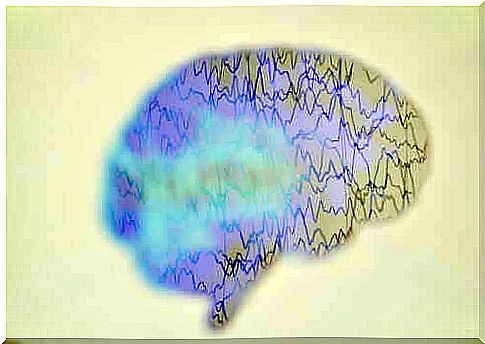Epileptic Crisis: Symptoms And First Aid
Watching a person with an epileptic seizure can be traumatic, especially as most do not know how to react to help the person and control the situation. Find out more about this topic today.

Statistics show that around 3 percent of the population will suffer from an epileptic crisis at some point in their life. So it’s a very common disease and the second most common neurological cause for a visit to the emergency room. Find out today how an epileptic crisis manifests itself and how you can help the person affected in this situation.
Epilepsy is a non-communicable, chronic malfunction of the brain that can occur at any age. Around 50 million people worldwide suffer from it, with around 80 percent of those affected living in middle or poor countries.
Then we will explain to you how an epileptic crisis becomes noticeable and how you can provide first aid in this situation.
What is an epileptic crisis?
An epileptic crisis arises from sudden, simultaneous impulses from the nerve cells, which are electrically discharged. One often speaks of a convulsive disorder, as convulsions are very typical for this disease and can occur all over the body. In the process, the affected patient loses consciousness.
There are different types of epileptic seizures:
- Acute, symptomatic crisis: An injury triggers the epilepsy attack (brain trauma, cerebrovascular disease, brain infection, fever, poisoning, or an unbalanced salt or sugar level in the blood, etc.).
- Unprovoked crisis: Around 6 in 10 people have this type of epilepsy, the cause of which cannot be precisely identified.
The ILAE (International League against Epilepsy) points out that epilepsy is a brain change that makes people more sensitive to epileptic seizures over the course of life. This has neurological, psychological and social consequences. This means that any one of us can have an epileptic fit, but not all of us have epilepsy.

Epileptic crisis: types, signs and symptoms
There are basically two types of epilepsy: generalized seizures and partial seizures.
Generalized seizures
In this case, the abnormal activity can be observed throughout the brain, usually leading to loss of consciousness:
- Absence: Children and adolescents are often affected. The patient loses consciousness for a few seconds and cannot be addressed during this time. However, he does not faint, nor does he have any muscle twitching. The affected person simply stops working and remains motionless with a fixed gaze.
- Myoclonic seizure: In this case there is no loss of consciousness. The patient suffers from muscle cramps, which usually occur in both hands.
- Tonic seizure: all muscles stiffen at the same time. The body is therefore as stiff as a board and the patient becomes unconscious.
- Clonic seizure: In this case, rhythmic twitching occurs in all limbs. The affected person loses consciousness, often bites their tongue, which can also release foam, and loses control of the sphincter muscles. This attack usually lasts for 1 to 2 minutes, after which the patient is confused for a few minutes.
Focal seizures
In this case, only a specific group of neurons is affected. Depending on which part of the brain is experiencing the abnormal activity, there may be visual or olfactory hallucinations or twitching in one hand, for example.

What can you do?
If you are witnessing an epileptic crisis, you can help the person in the following ways:
- You should try to stay calm.
- Carefully lay the patient down on the floor or in a place where there is no risk of injury. If possible, place your head on a flat pillow. Remove dangerous objects.
- The patient must lie on their side for easy breathing.
- Get rid of necklaces, if any.
- Stay by the affected person’s side until the crisis is over.
What you are not allowed to do
It is very important to avoid making mistakes in this situation so as not to endanger the person concerned. You must not try to resuscitate the patient. In addition, you should not hold the patient during the crisis or try to put anything in their mouth or between their teeth to hold their tongue. When the affected person is lying on their side, the tongue is usually not a problem.
You are also not allowed to offer the affected person any food or drinks immediately after the seizure. Wait for her to regain consciousness and recover.









